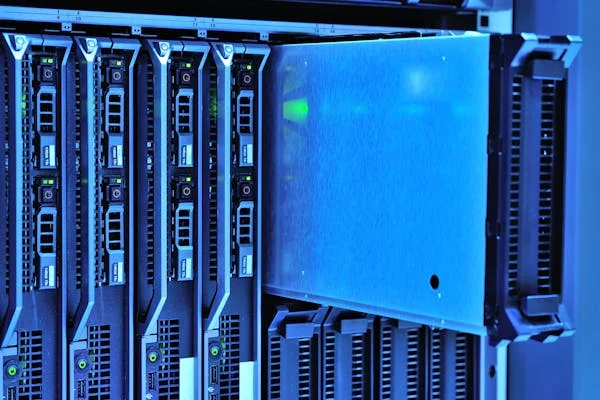In today’s healthcare landscape, the integration of scalable IT systems is not just a luxury but a necessity. With rising patient expectations, the need for efficient processes, and an ever-evolving regulatory environment, healthcare organizations must adapt to stay competitive. Scalable IT systems provide the flexibility to handle growing patient volumes and evolving technological demands while improving care quality and operational efficiency. The following six tips will guide you through key considerations for successfully transforming healthcare delivery with scalable IT systems.

1. Enhancing Efficiency and Care Quality
The integration of IT in healthcare is revolutionizing the industry by streamlining processes, improving patient care, and enhancing operational efficiency. Advanced test ordering software, such as DNA test ordering software, enables healthcare providers to quickly order, track, and receive diagnostic results, reducing errors and delays. Additionally, Electronic Health Records (EHR) systems centralize patient information, allowing for seamless sharing between healthcare professionals, and improving decision-making and treatment accuracy. Other software solutions, such as telemedicine platforms and patient management systems, facilitate remote consultations and efficient patient flow, ensuring that healthcare services are accessible and organized. These IT innovations not only improve the quality of care but also help healthcare providers meet the increasing demand for services while maintaining high standards of security and compliance.
2. Ensure Data Security and Compliance
Data security is a critical concern for healthcare organizations, as they manage vast amounts of sensitive patient information. As IT systems expand, so do the risks associated with data breaches, cyberattacks, and non-compliance with regulations like the Health Insurance Portability and Accountability Act (HIPAA) and the General Data Protection Regulation (GDPR). To address these threats, scalable IT solutions must incorporate robust security protocols designed to safeguard patient data while adhering to stringent regulatory requirements.
Key features of a secure healthcare IT system include data encryption, multi-factor authentication (MFA), and regular security audits to identify vulnerabilities. Encryption ensures that data is unreadable to unauthorized users, while MFA adds an extra layer of protection. Furthermore, scalable data storage and backup solutions allow healthcare organizations to manage increasing volumes of data without compromising security. With the constant evolution of cyber threats, it’s essential to stay proactive and invest in scalable security systems to maintain compliance and protect patient trust.
3. Leverage Cloud-Based Solutions
Cloud-based solutions offer healthcare organizations the flexibility and scalability they need to manage large amounts of data and accommodate rapid changes in demand. Unlike traditional on-premises systems, cloud infrastructure allows for quick upgrades and easy expansion without the need for extensive physical hardware investments.
By moving data and applications to the cloud, healthcare providers can reduce operational costs, streamline workflows, and improve collaboration among healthcare teams. This is particularly valuable in situations like the COVID-19 pandemic, where many organizations had to rapidly scale up telehealth services to meet patient needs.
Cloud solutions also provide built-in redundancy and disaster recovery options, ensuring continuous service availability. The flexibility of cloud computing allows healthcare organizations to adjust resources as needed, ensuring that their IT systems can handle surges in patient demand or technological upgrades.
4. Integrate Interoperable Systems
Interoperability is essential for modern healthcare delivery, allowing various systems to communicate with one another and share data seamlessly. Scalable IT systems must support the integration of different technologies, such as EHRs, lab systems, radiology software, and billing platforms, to create a unified patient care ecosystem.
When systems are interoperable, healthcare providers have access to a comprehensive view of a patient’s health history, which leads to better decision-making and more effective treatment plans. Interoperability also enables better collaboration among healthcare professionals and reduces the risk of errors or redundant tests, improving the overall quality of care.
To achieve interoperability, healthcare organizations should adopt standardized data formats and protocols, such as Fast Healthcare Interoperability Resources (FHIR). Scalable IT systems that support these standards can easily adapt to new technologies or regulatory changes in the future.
5. Focus on Automation and Artificial Intelligence
Automation and Artificial Intelligence (AI) are transforming healthcare by streamlining administrative tasks, improving diagnostics, and enhancing clinical workflows. Scalable IT systems can integrate AI tools to analyze patient data, predict outcomes, and automate routine processes like appointment scheduling or billing.
For example, AI-powered systems can analyze large datasets to identify patterns and predict disease outbreaks, helping healthcare providers take preventive measures. Automation can also reduce the burden of manual data entry, allowing healthcare staff to focus on patient care rather than administrative tasks.
As healthcare organizations scale up, automation and AI become even more critical in managing increased workloads efficiently. Investing in scalable IT systems with built-in AI capabilities ensures that healthcare providers can stay ahead of technological advancements and maintain high levels of service as demand grows.
6. Adopt a Modular IT Approach
A modular IT approach allows healthcare organizations to build flexible, scalable systems by implementing individual components or modules that can be updated or expanded as needed. Instead of investing in a complete system overhaul, organizations can upgrade specific parts of their IT infrastructure without disrupting existing operations.
Modular systems are particularly beneficial in a rapidly changing healthcare environment, where new regulations, technologies, or patient care models may emerge. This approach also allows for a more cost-effective way to scale IT systems, as organizations can focus on upgrading only the areas that require improvement or expansion.
Additionally, modular IT systems facilitate easier integration of new technologies, such as telemedicine platforms or remote monitoring devices, ensuring that healthcare providers can adapt to changing patient needs without overhauling their entire IT infrastructure.

Scalable IT systems are essential for healthcare organizations aiming to improve patient care, streamline operations, and remain competitive in a constantly evolving landscape. These systems allow providers to adopt patient-centric solutions, ensuring seamless care while maintaining data security and regulatory compliance. Leveraging cloud-based infrastructure offers the flexibility to scale quickly while promoting interoperability and enables different systems to work together, enhancing collaboration across healthcare teams.
Embracing automation and AI further optimizes workflows, improving diagnostic accuracy and reducing administrative burdens. A modular approach ensures that healthcare IT systems can be easily upgraded and expanded as technologies and patient needs evolve. Ultimately, transforming healthcare delivery through scalable IT systems isn’t just about adapting to current trends—it’s about future-proofing healthcare for long-term sustainability and improved outcomes.





